本文由 Vogt Landscape Architects 授权mooool发表,欢迎转发,禁止以mooool编辑版本转载。
Thanks Vogt Landscape Architects for authorizing the publication of the project on mooool. Text description provided by Vogt Landscape Architects.
Vogt:德国汉堡市有着非常丰富的传统文化和许多全民运动公园。直到如今,还有许多可以追溯到20世纪的早期社区仍保存完好,它们受到改革派思想的影响,提倡融入更多的光线、空气、运动以及对大众教育的设计。根据汉堡Gartenkunst改革运动的推动者之一Alfred Lichtwark的说法,每一位居民居住的地方离公共绿地都应只有咫尺之遥。这一传统如今已成为汉堡集体记忆的一部分,时至今日,它不仅影响着这座城市的建筑,也影响着人们的期望和使用习惯。许多绿地基本是由林地或园地构成的开放空间:即所谓的Volkswiese或“人民草地”。在其基本构成上,Lohsepark延续了Volkspark的运动传统:像汉堡的城市公园或阿尔托纳的人民公园一样,该公园着眼于城市的未来发展,建立在“城门外”。
Vogt:The city of Hamburg has a rich tradition and many parks created by the Volkspark movement. Today, numerous neighborhoods dating from the early twentieth century can still be clearly recognized, influenced by reformist ideas that advocated more light, air, movement, and education for the populace. According to Alfred Lichtwark, one of the promoters of the Gartenkunst reform movement in Hamburg, every inhabitant ought to have access to public green space within “pram-walking distance” of where they live. This tradition is part of Hamburg’s collective memory, which to this day still conditions not only the city’s architecture but also the expectations and usage habits of its population. The basic motif of many of the facilities is an open core framed by woodland or allotments: the so-called Volkswiese or “people’s meadow.” In its basic composition, Lohsepark continues the tradition of the Volkspark movement: like Hamburg’s Stadtpark or Altona’s Volkspark, the park was established “outside the city gates” with an eye to the anticipated process of urban development.

两端临水 From Water to Water
如果你站在Lohsepark的中央,放眼四周,你就能感受到这个区域的空间品质。公园开放空间的纵轴两端连通港口盆地,将阳光和空气引入公园内部。传统的通过划分花园或种植树木过渡到Volkspark——由于缺乏空间而没有实现——现已用阶地取代。作为从一个水体到另一个水体的视线补充,这代表了公园的第二个基本主题:分为三个层次,分别对应三个语义。这一设计不仅起到防洪的作用,还表现了当地的历史,满足了空间和新区域的规划要求,同时保持了城市的层次感。
If you stand in the middle of Lohsepark and turn around in a circle, you will get a sense of the spatial qualities of the area. At both ends, the longitudinal axis of the open space leads to a harbor basin, bringing light, air, and sunshine into the interior of the park. The traditional transition into a Volkspark marked by allotment gardens or a stand of trees—not realized due to a lack of space—has been replaced by a terraced shift in levels. As a complement to the line of sight leading from one body of water to another, this represents the second basic motif of the park: the separation into three tiers corresponding to three semantic levels. This stepping of the site not only acts as flood protection, it also acknowledges the history of the site and meets the spatial and programmatic requirements of the new quarter, while keeping the layering of the city legible.
▼总平面图 Master Plan
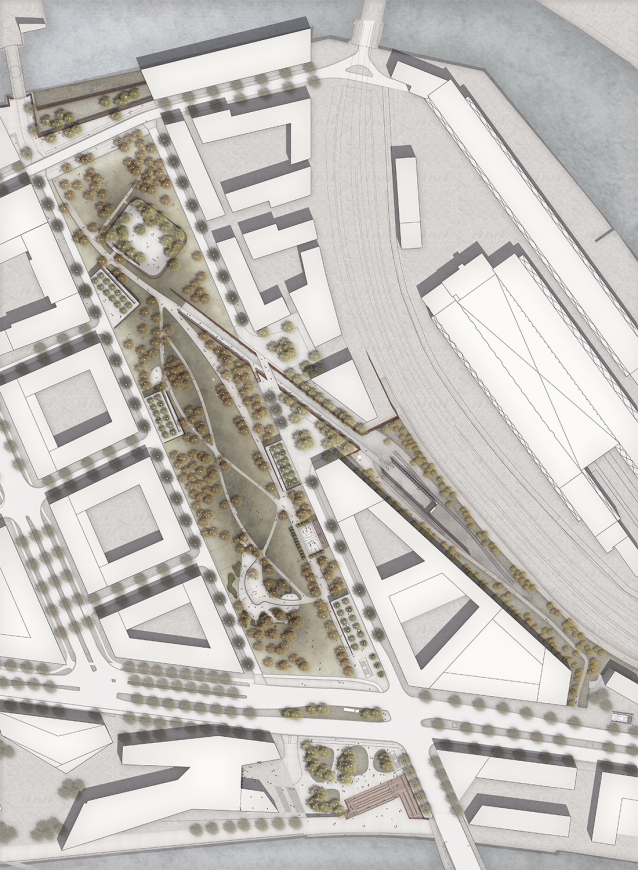
▼临水的阶地设计,在起到防洪作用的同时,还表现了当地的历史,保持了城市的层次感 This stepping of the site not only acts as flood protection, it also acknowledges the history of the site and keeping the layering of the city legible.
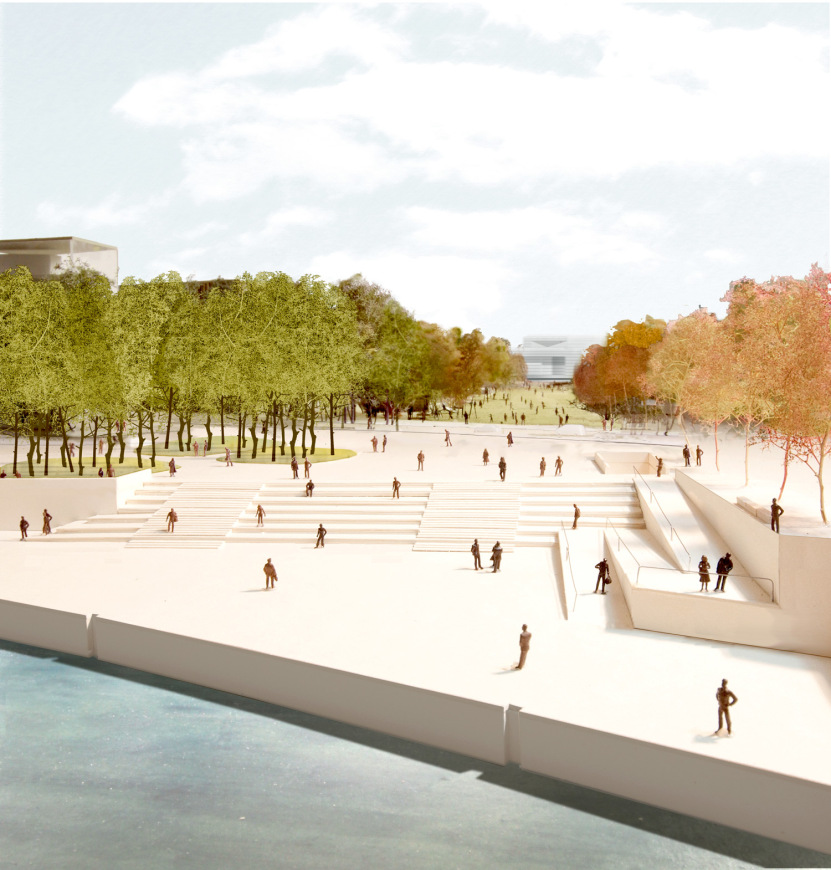
城市层面 The City Level
主入口通过植物露台引导游客进入公园,这些露台就像堡垒一样,作为封闭的地标向公园延伸,同时也在空间上作为公园的一部分,协调着城市建筑和实际的开放空间。用于挡土墙和露台护墙的蜂窝熟料砌砖,是在公园扩展过程中特别进行设计的。它不仅融入了汉堡的建筑传统,而且它的褶皱形式和穿孔也打破了原有墙体的厚重感。
The main entrance leads via planted terraces, which act like bastions, projecting into the park as enclosed landmarks. Spatially part of the park, they mediate between the built structures of the city and the actual open space. The honeycomb clinker brickwork used for the retaining walls and parapets of the terraces, was specifically designed in an extended process. Not only does it embed the site in Hamburg’s architectural tradition, but its pleated form and perforation break up the monolithic character of the otherwise massive wall.
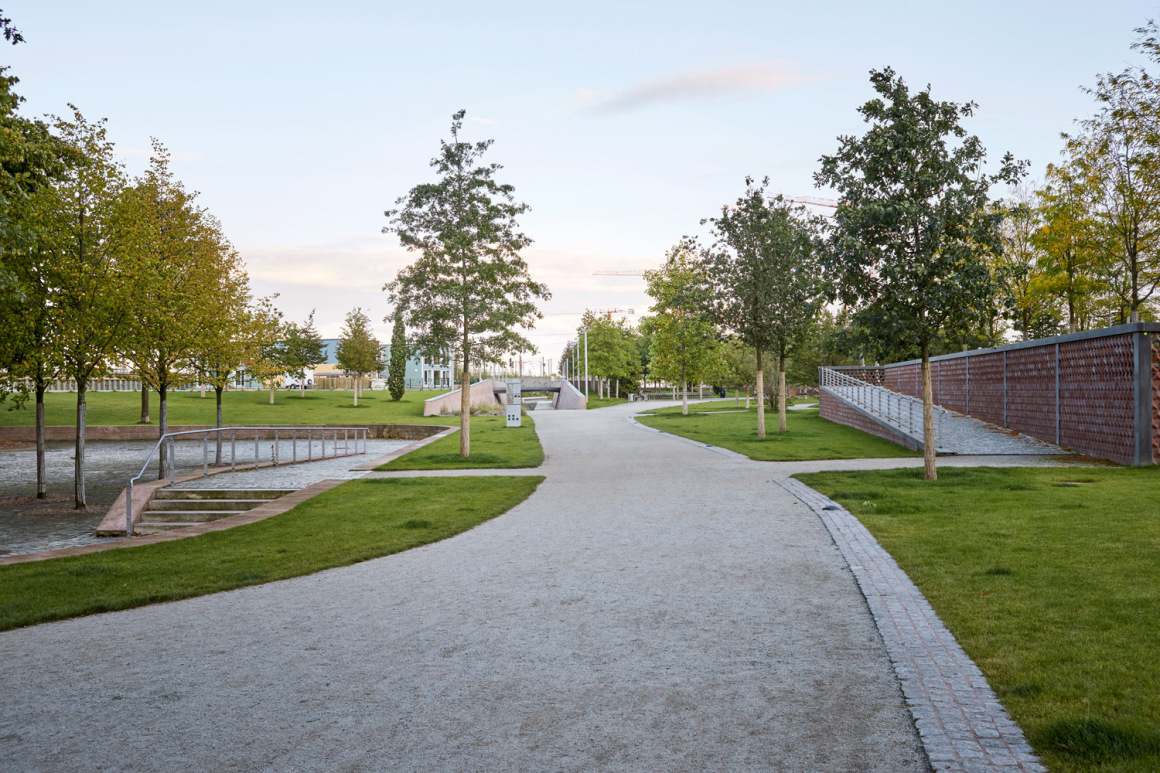
▼蜂窝熟料砖砌的挡土墙和露台护墙,不仅融入了汉堡的建筑传统,而且它的褶皱形式和穿孔也打破了原有墙体的厚重感 The honeycomb clinker brick retaining wall and parapets of the terraces, not only blend in with Hamburg’s architectural tradition, but its pleated form and perforation break up the monolithic character of the otherwise massive wall.


公园层面 The Park Level
Lohsepark在街道和散步道下方1.5米处,设有宽敞的草坪空间,人们可以在此游戏和日光浴,四周环绕着大量当地常见的树木和灌木。这个公园设计了一些非常态的地方:所谓的“愚蠢”设计。小树林里种植着奇形怪状的角树;被栅栏隔开的“荒野”展示了一片没有人类干预的景观演变空间;而石窟,其夯实混凝土层和各种夹杂物,如瓦片,泥炭,甚至玻璃,为儿童创造了一个不寻常的空间,补充丰富了公园的其他游戏设施。
Lohsepark, with its spacious lawns for games and sunbathing, is 1.5 meters below the level of the streets and promenades and bordered by a rich collection of familiar-looking trees and shrubs. The park features unusual places: the so-called follies. A small grove contains hornbeams grown in quirky shapes; a piece of fenced-off “wilder-ness” shows how a fragment of landscape evolves without human intervention; and the grotto, with its layering of tamped concrete and various inclusions such as shingle, peat, and even glass, creates an unusual space for children, complementing the other play features in the park.
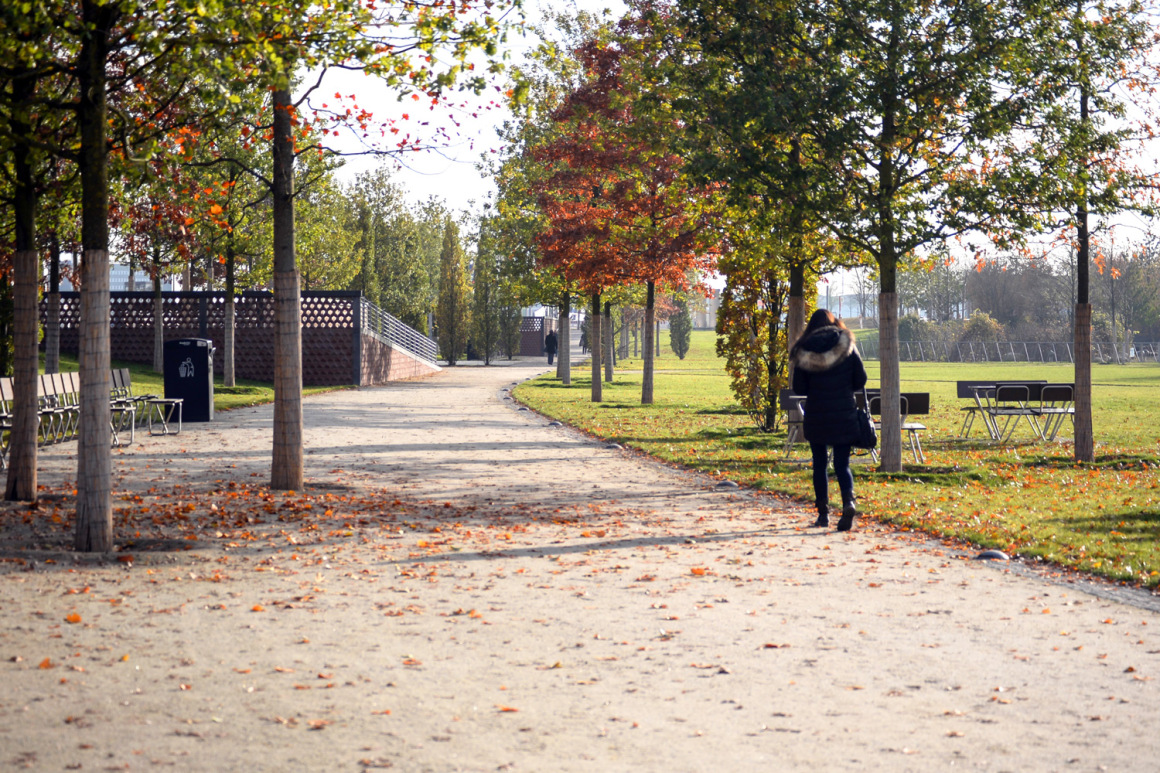
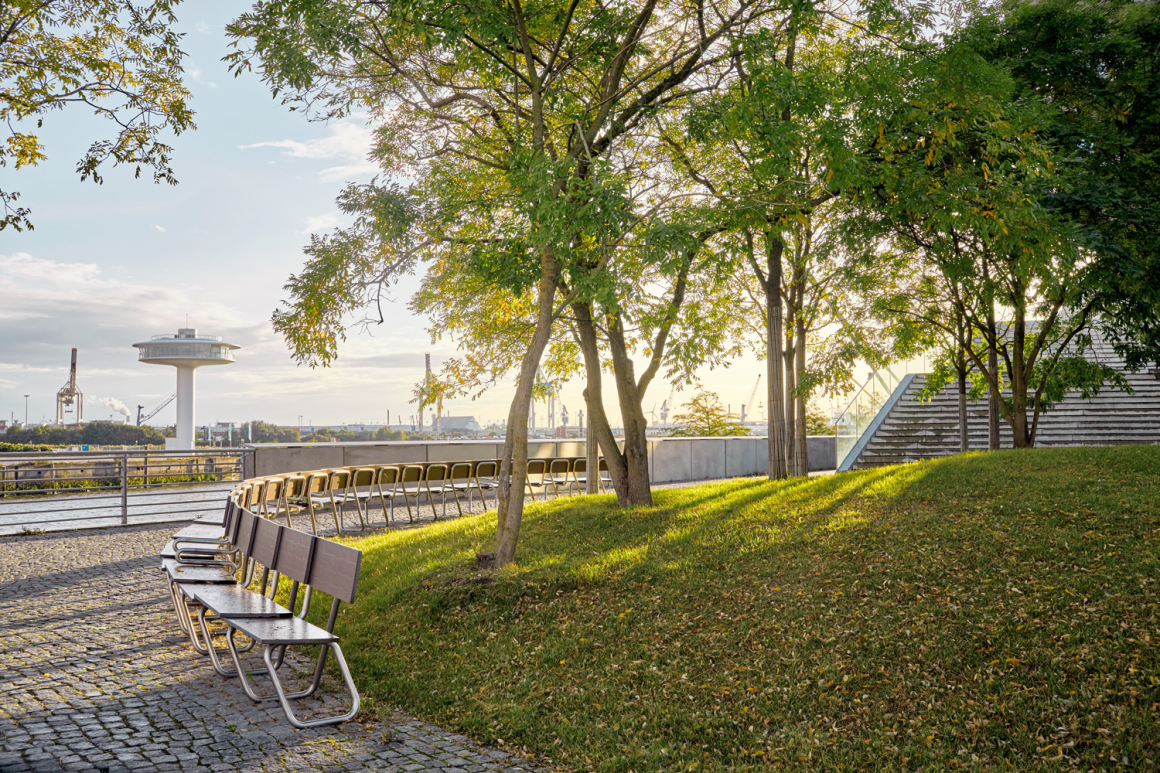
▼混凝土石窟,为儿童创造了一个不寻常的空间,补充丰富了公园的其他游戏设施 The grotto creates an unusual space for children, complementing the other play features in the park.
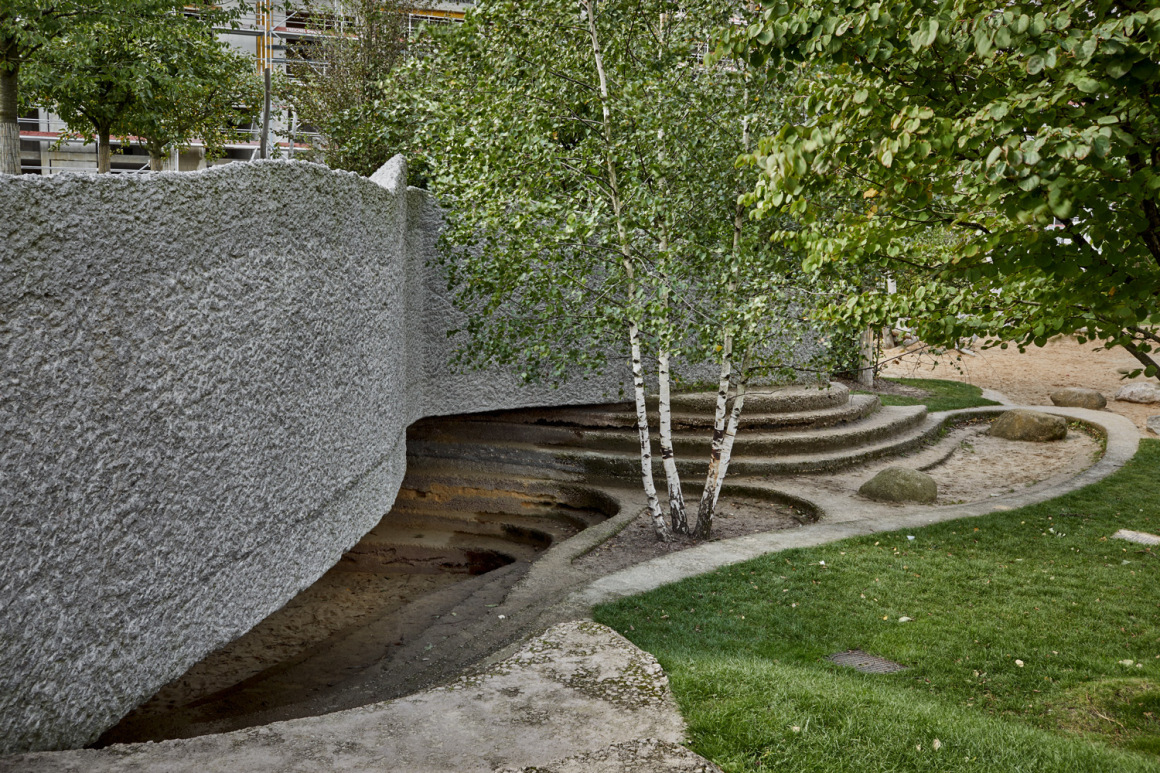

历史层面——纪念空间 The Historical Level—A Memorial
公园的最低处是精确划分的历史遗址:Hannoversche Bahnhof的建筑遗迹独特的视觉风格,让人回想起这个车站在二战期间曾是犹太人、辛提人和罗马人被驱逐出境的主要起点。与深地质层相似的是,该遗址位于公园地面以下一米,城市地面以下三米。
Lower still, precisely demarcated by a further drop in level, are the historical sites: the architectural remains of the Hannoversche Bahnhof have their own visual idiom and recall the history of the station as the main starting point for the deportation of Jews, Sinti, and Roma during World War II. Resembling a deeper geological layer, the site lies one meter below the park level and up to three meters below the city level.
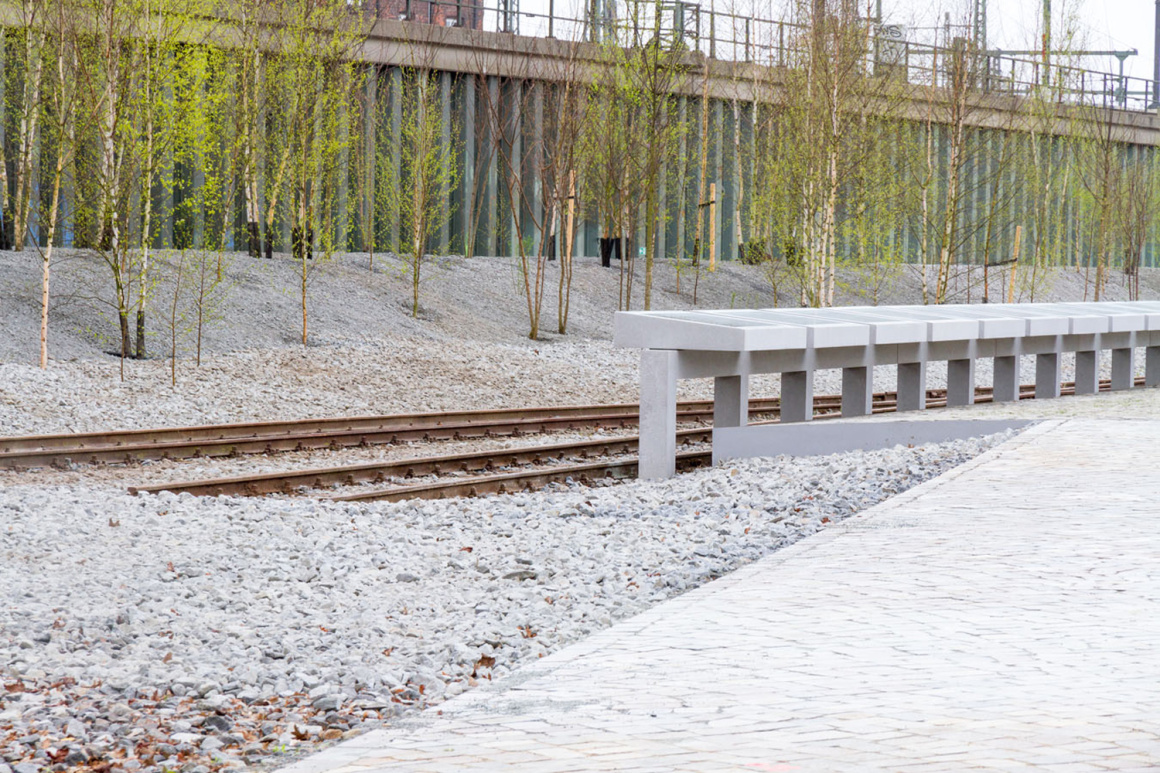
▼施工过程 Construction Process
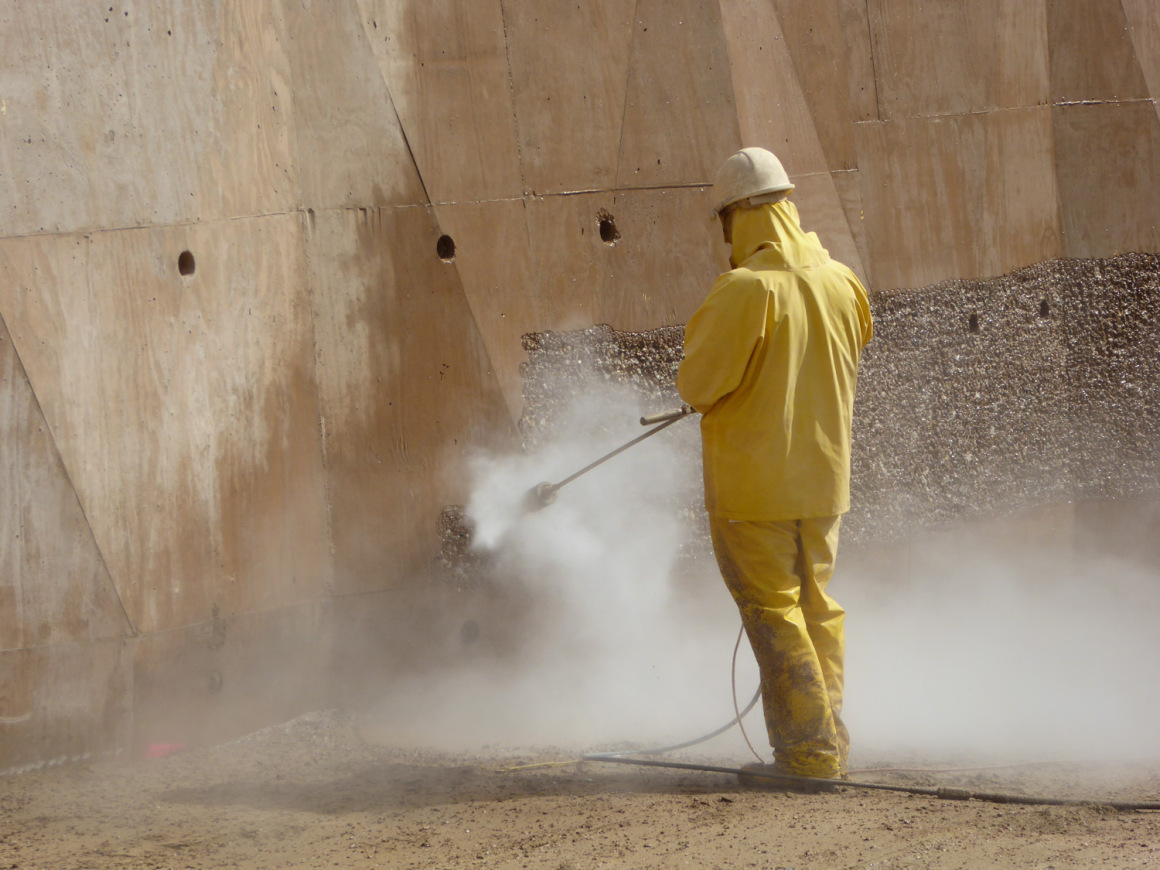
▼剖面图 Section
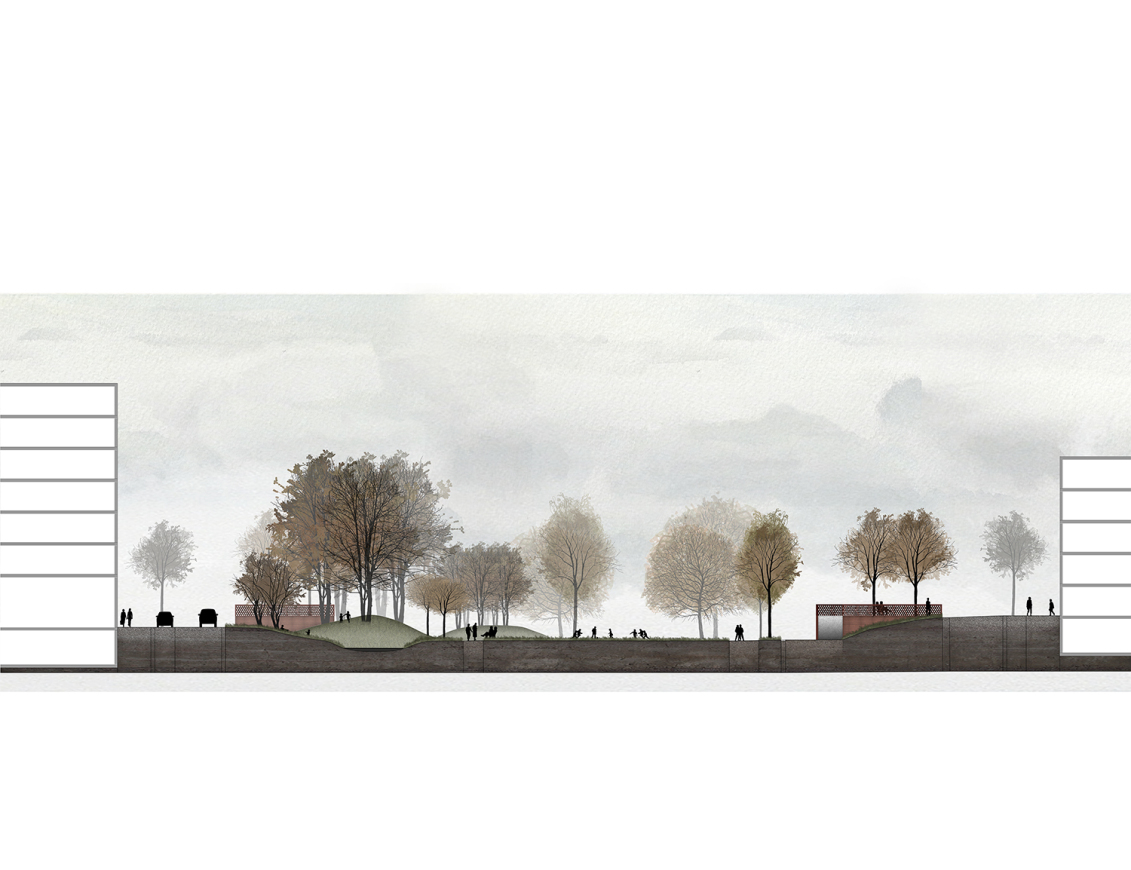
客户:德国 汉堡 Hafencity Hamburg GmbH
景观:Vogt Landscape Architects
建筑:Coop Himmelb(l)au,维也纳
设计/建设:2010 – 2014/2015 – 2017
类型:公园
面积:4.7公顷
状态:已建成
Client: Hafencity Hamburg GmbH, Hamburg
Landscape: Vogt Landscape Architects
Architecture: Coop Himmelb(l)au, Vienna
Process/Realization: 2010–2014/2015–2017
Types: Park
Size: 4.7 ha
Status: Realized
更多read more about: Vogt Landscape Architects




0 Comments